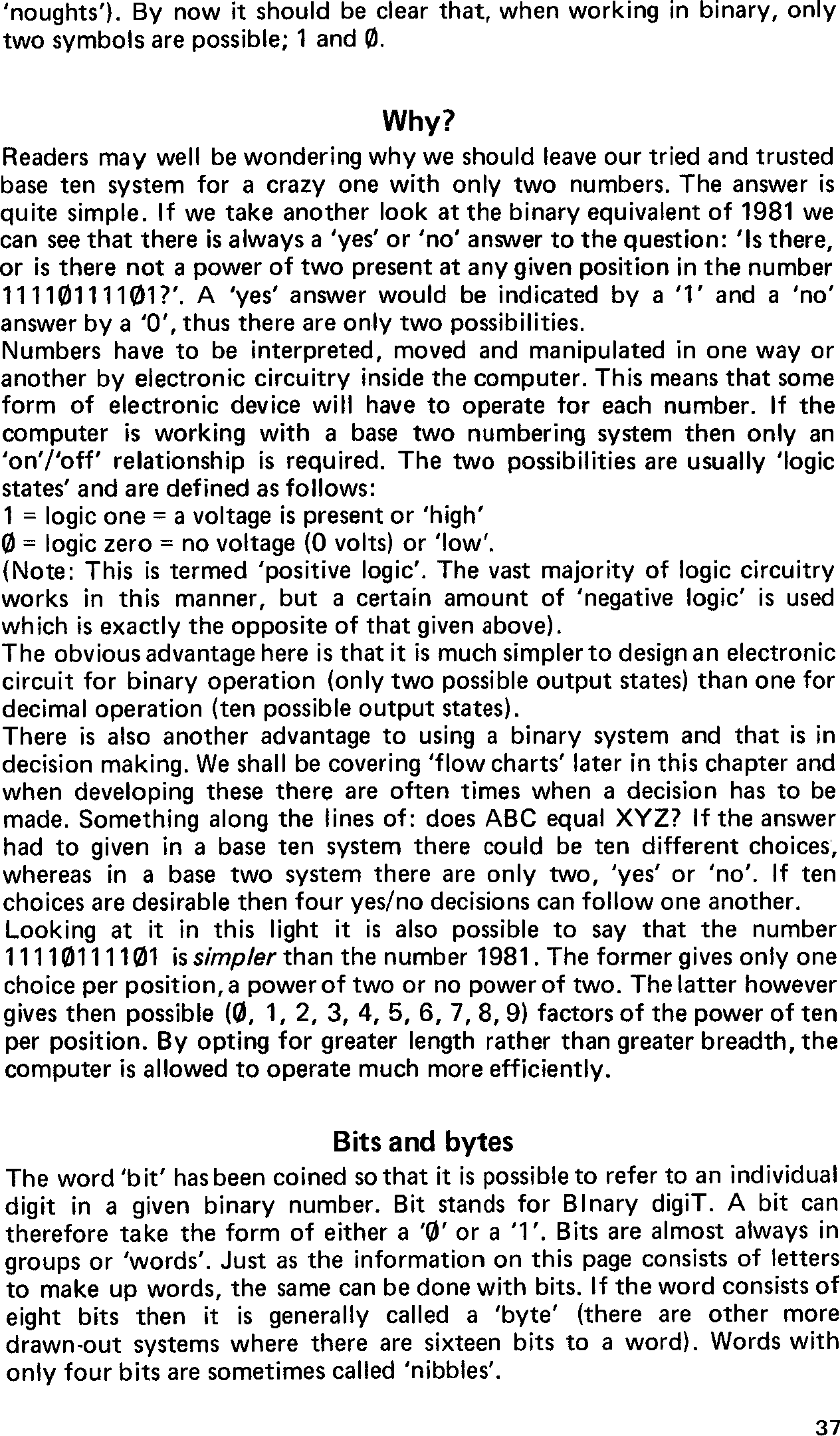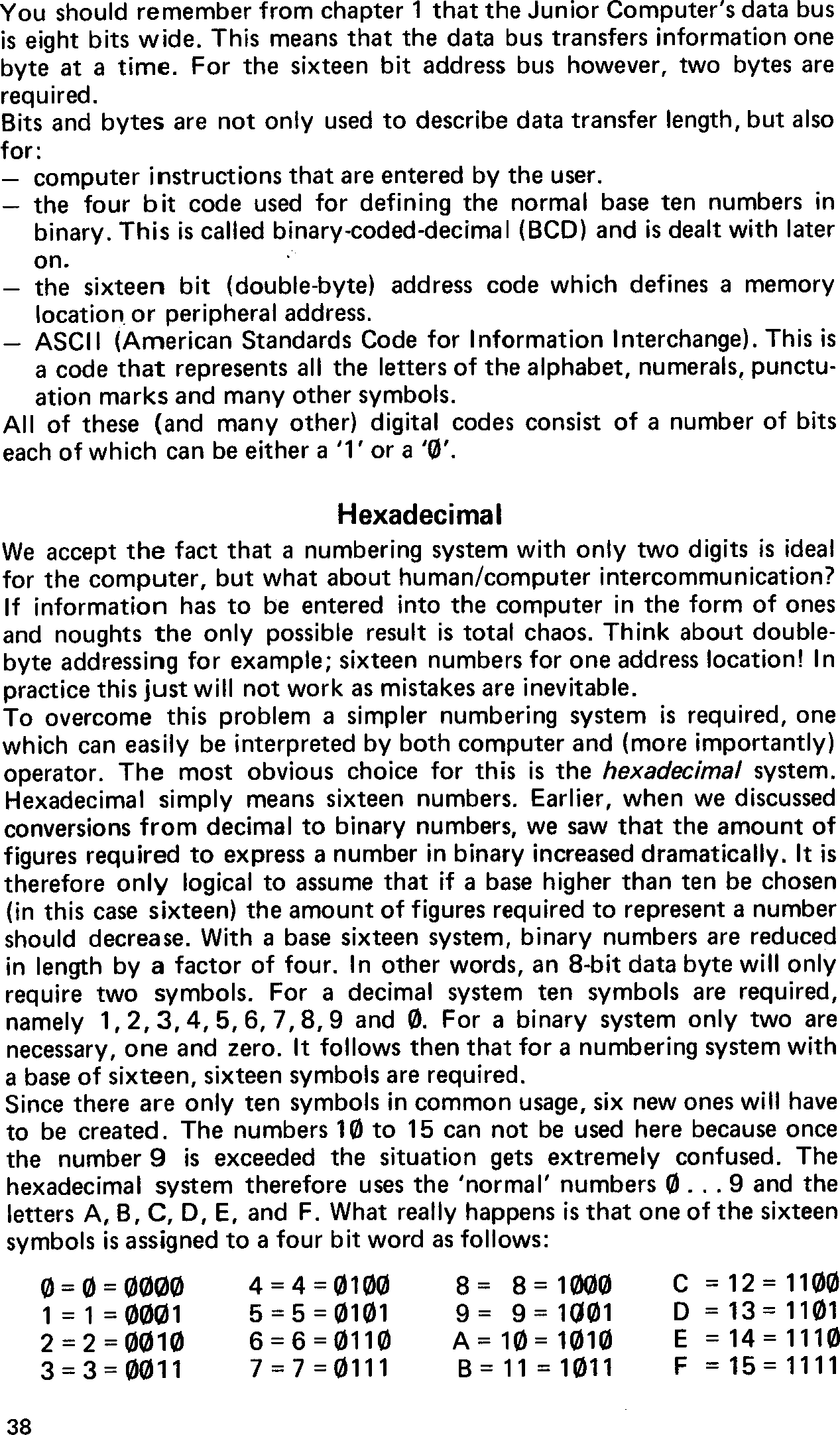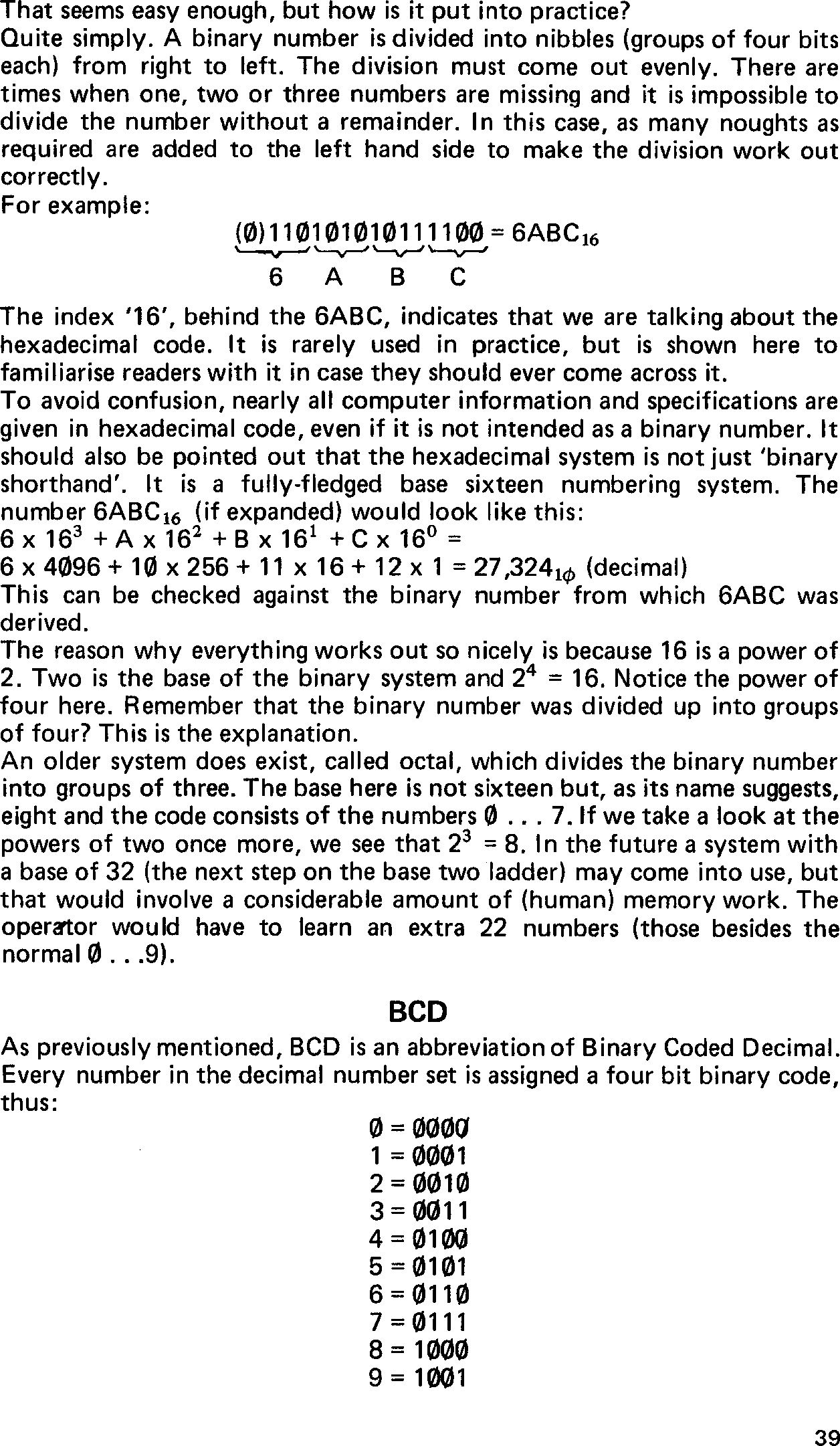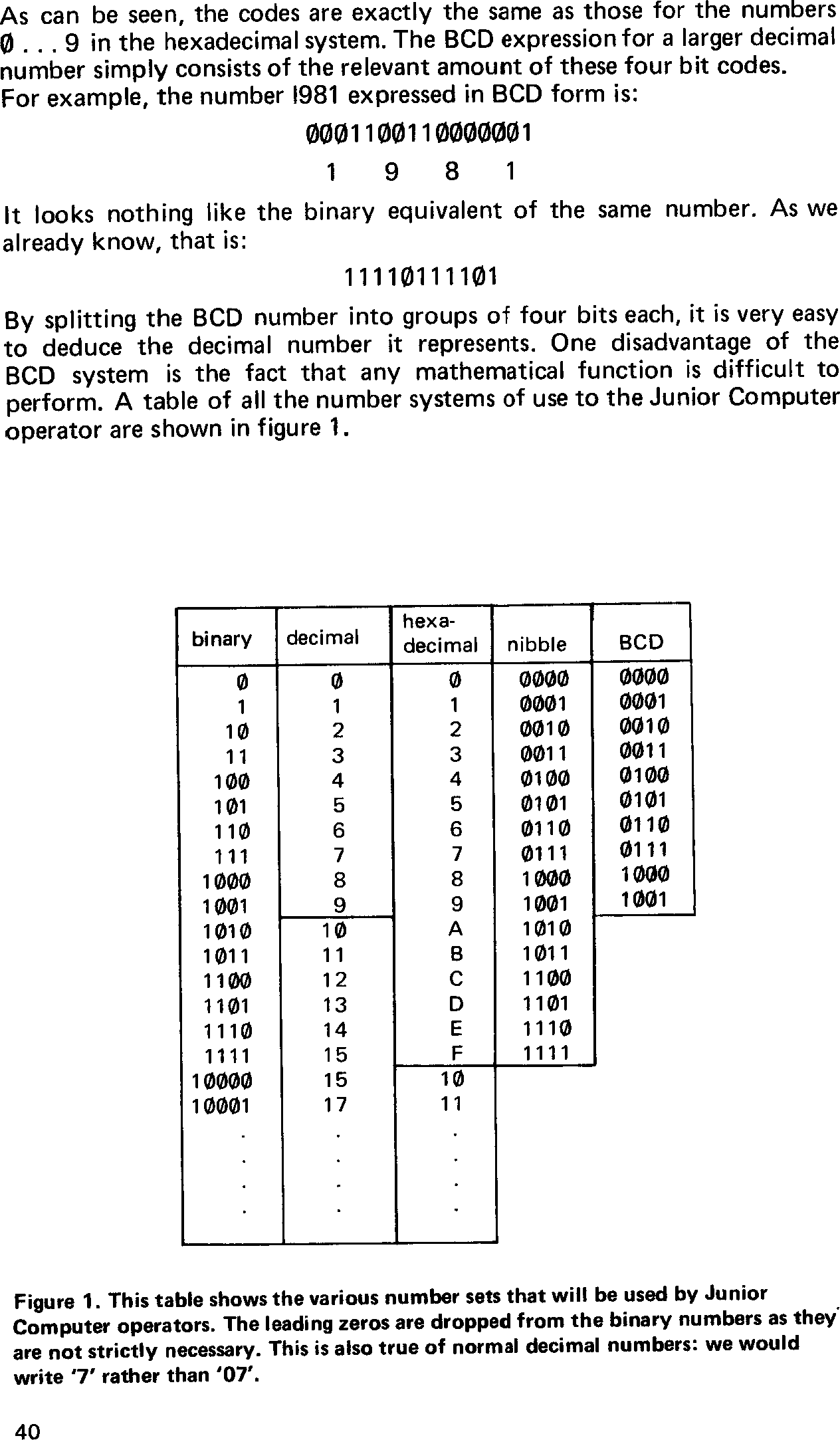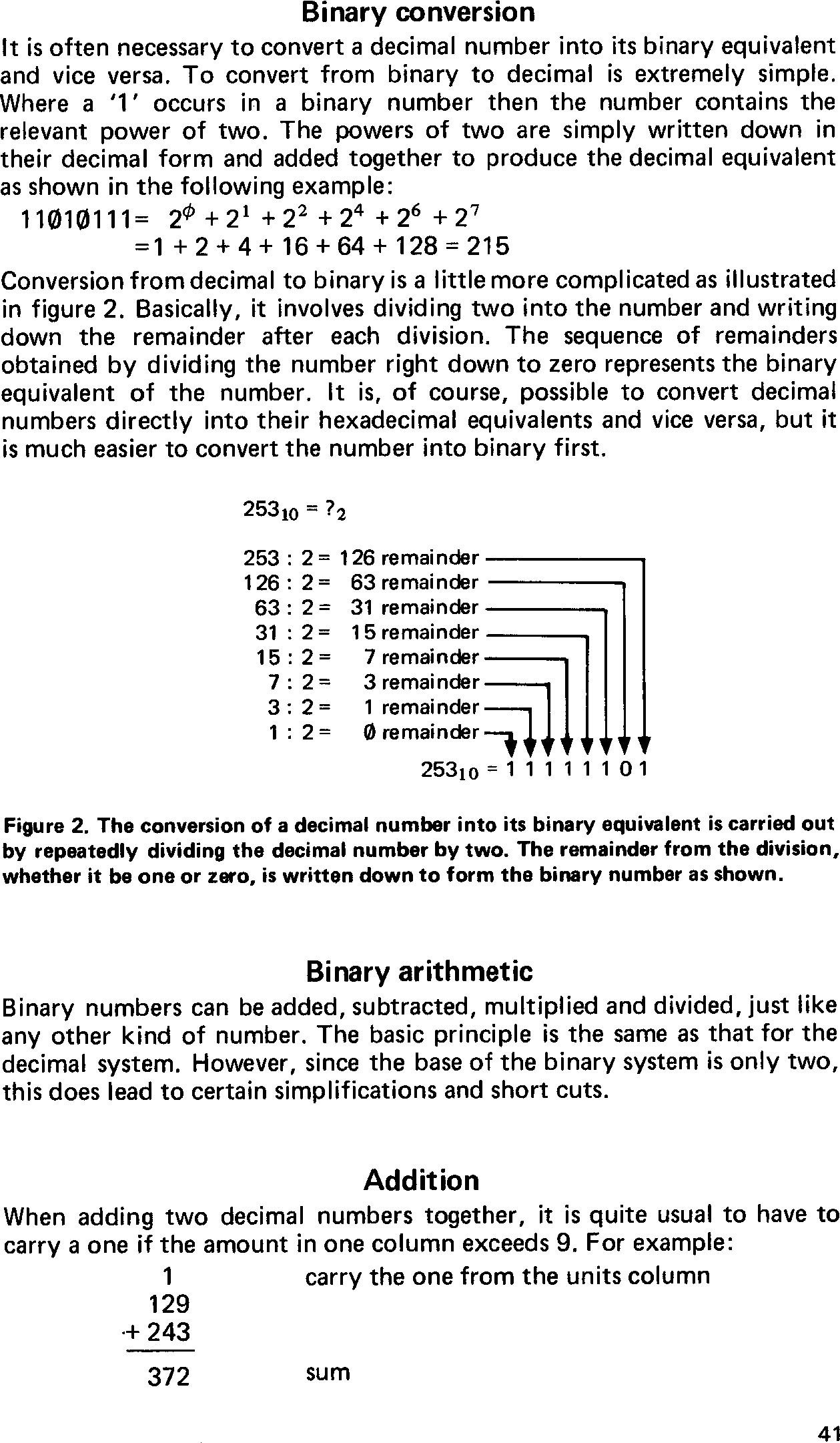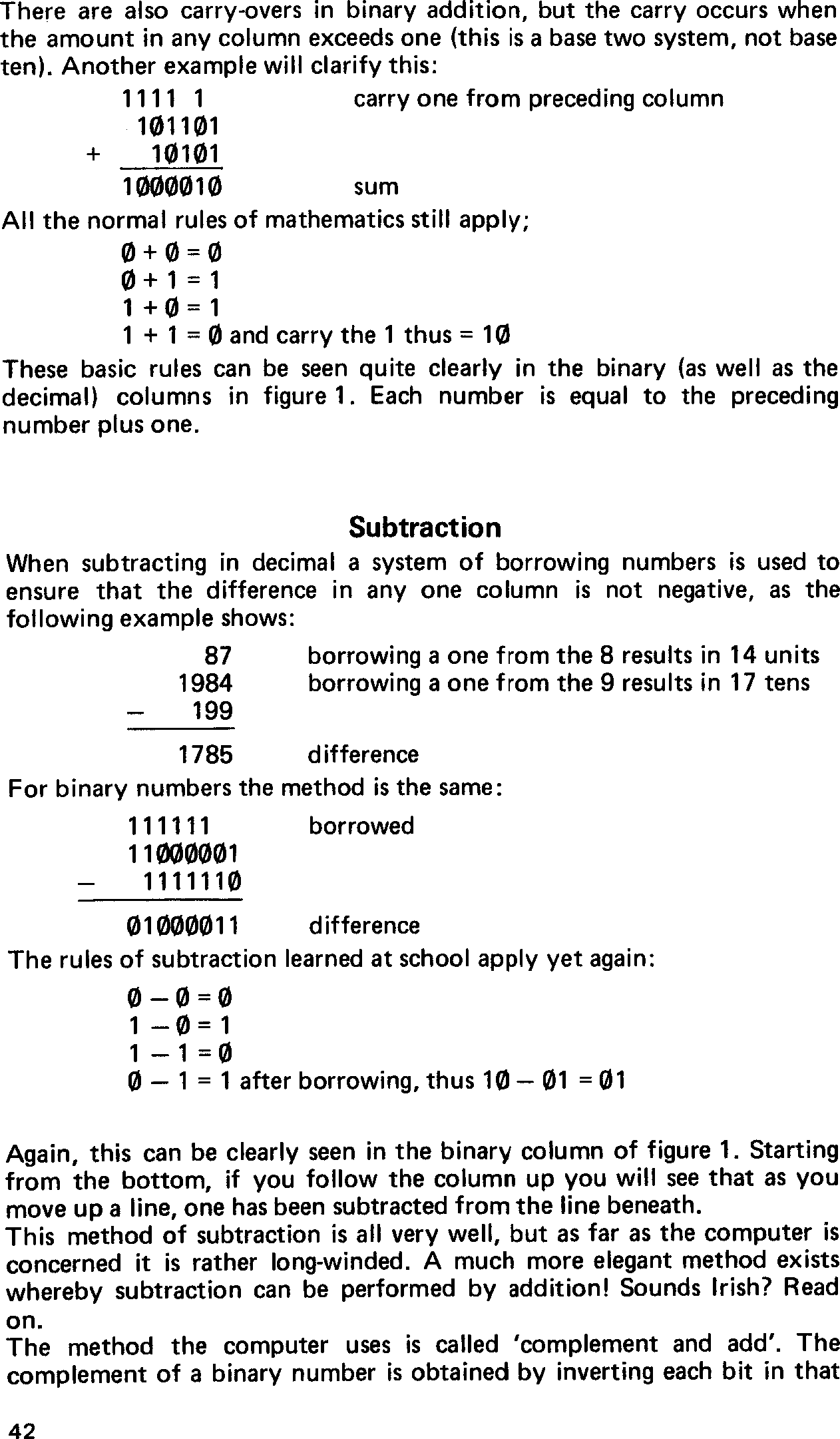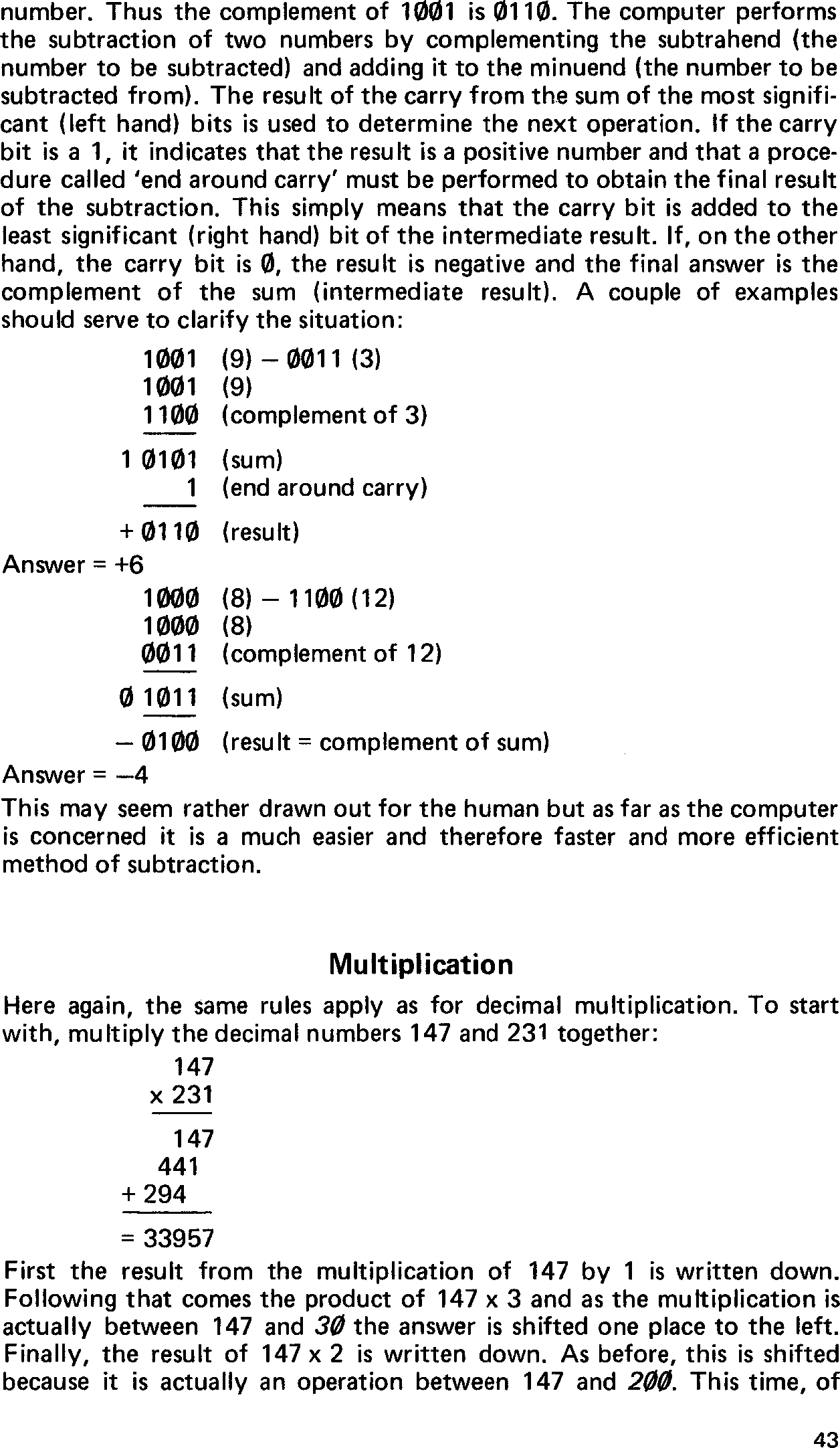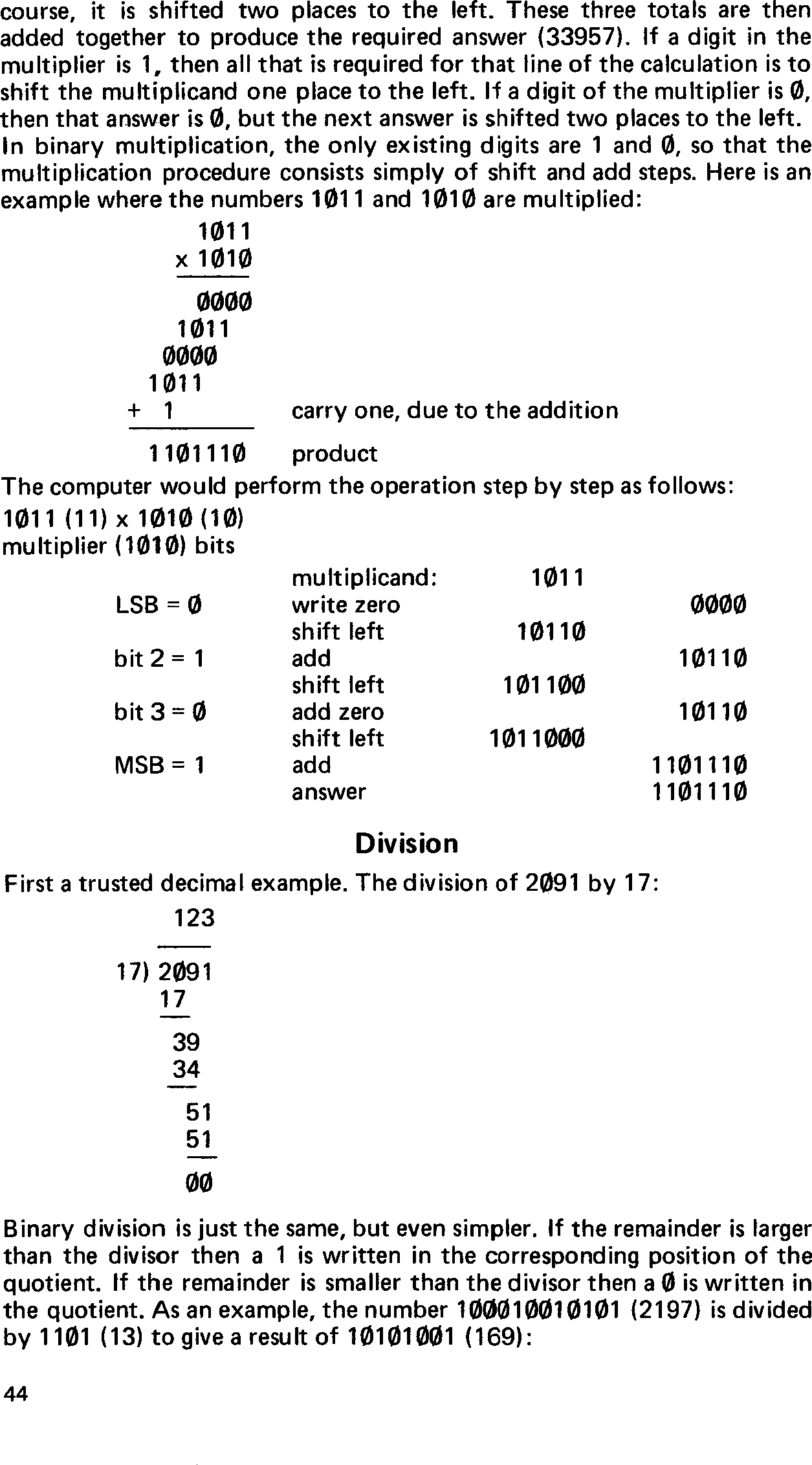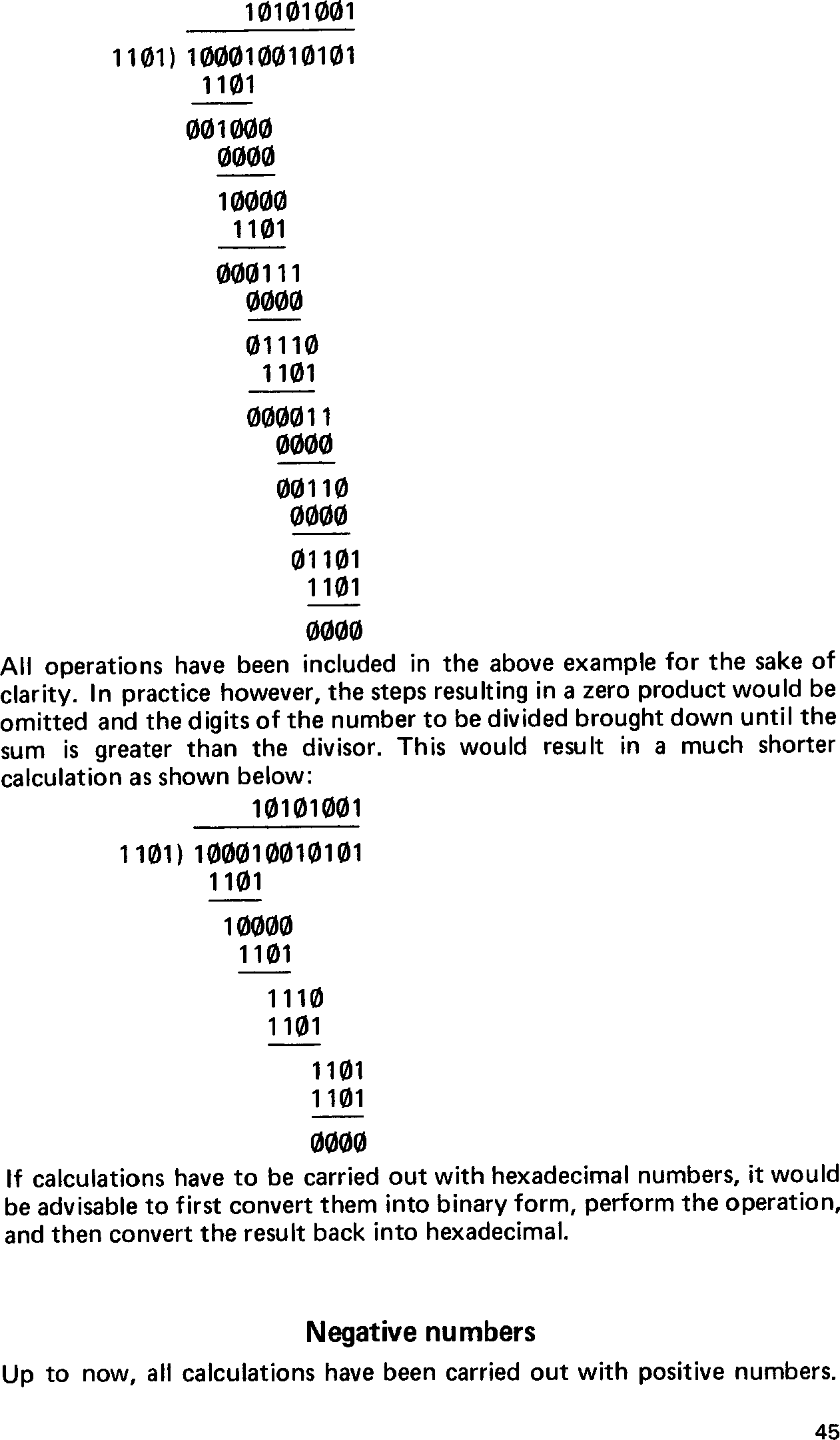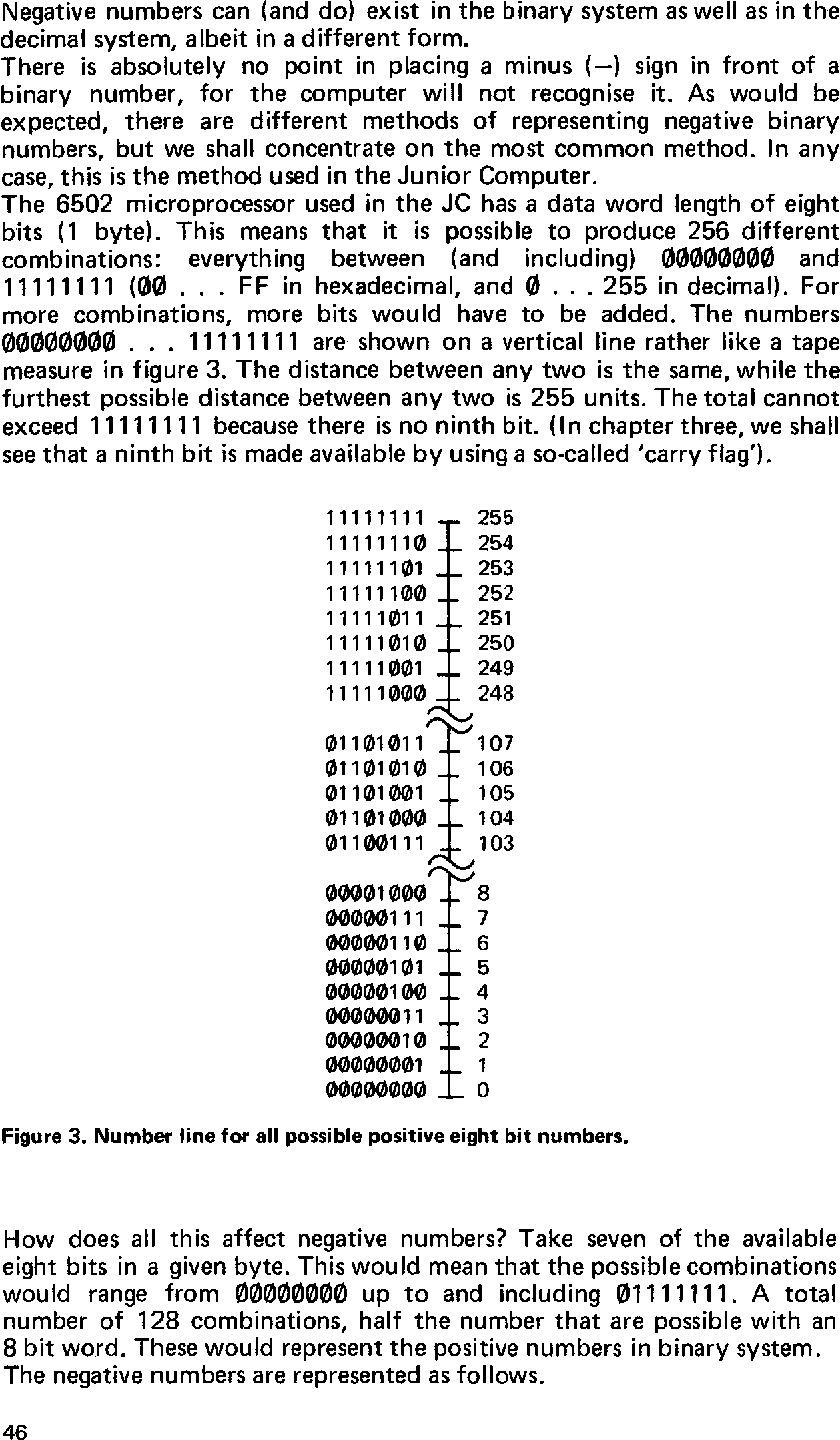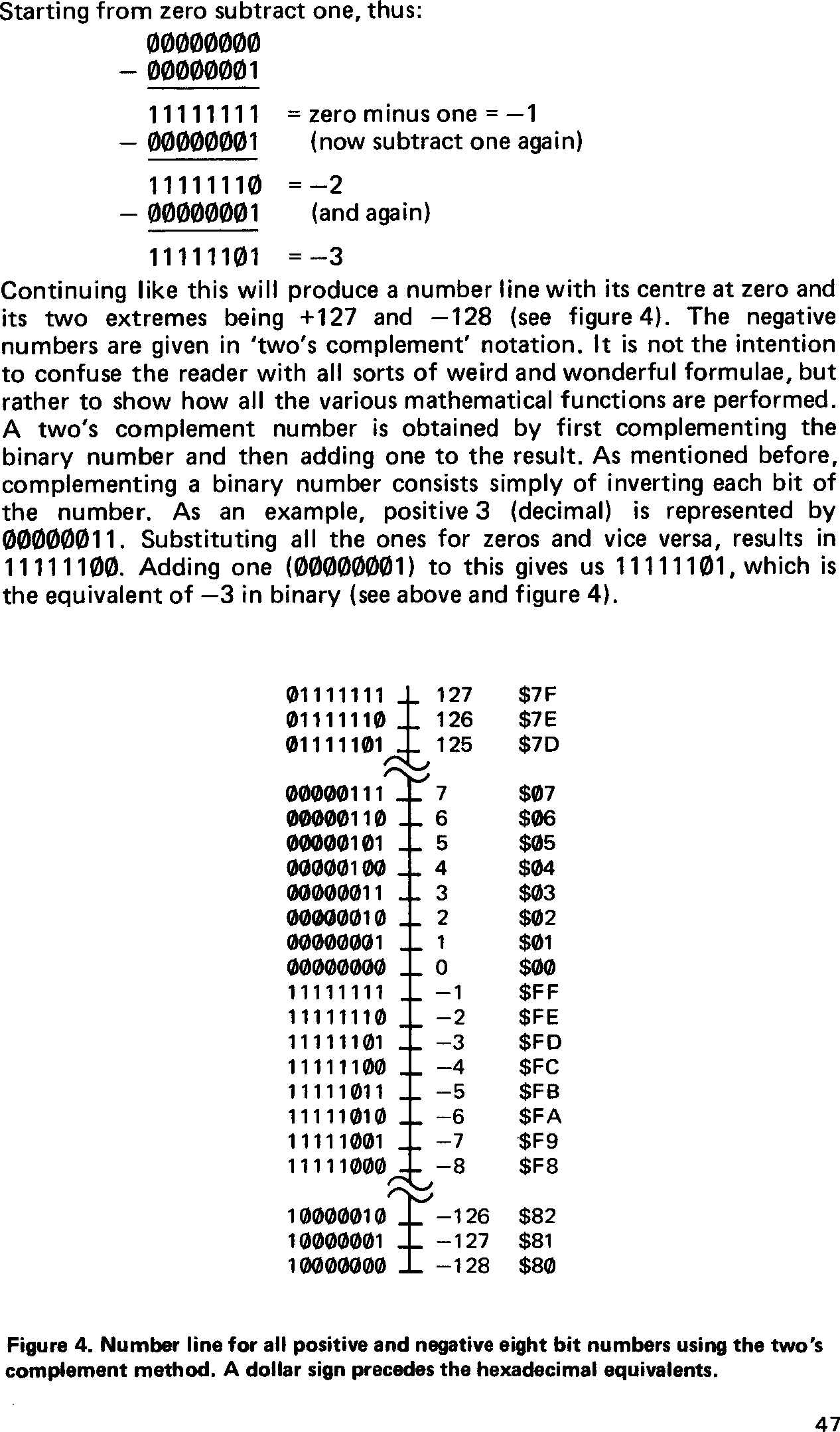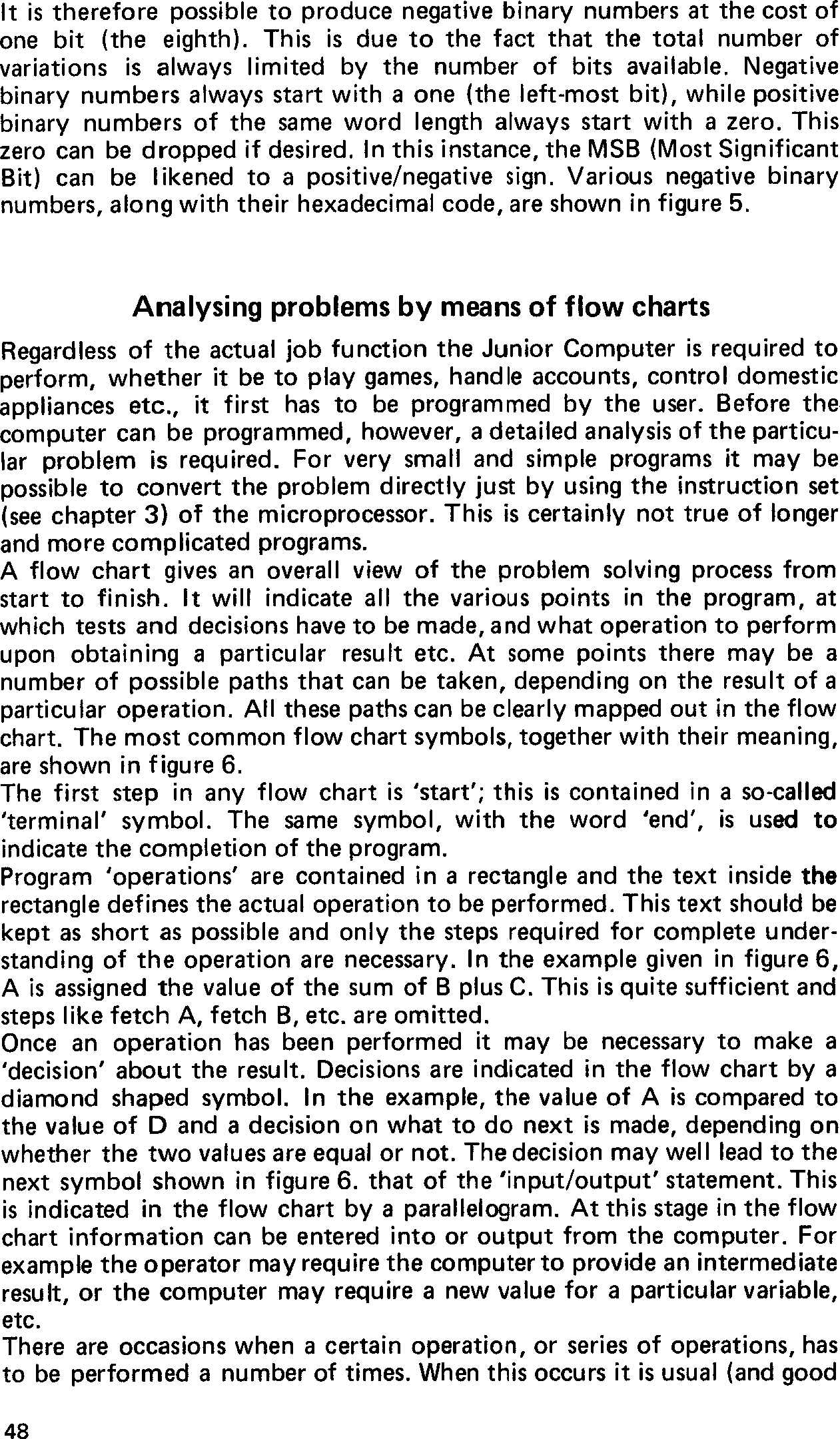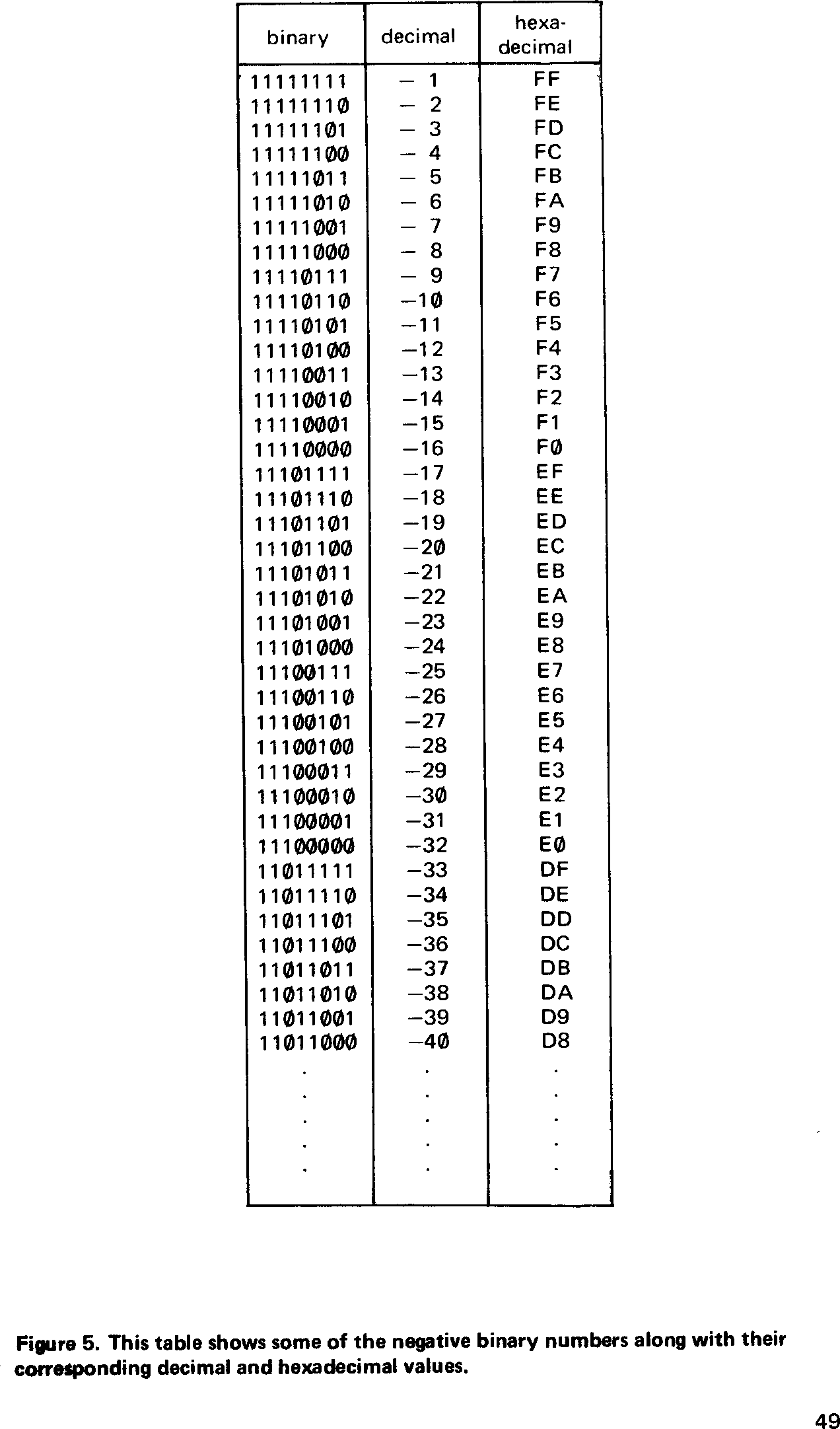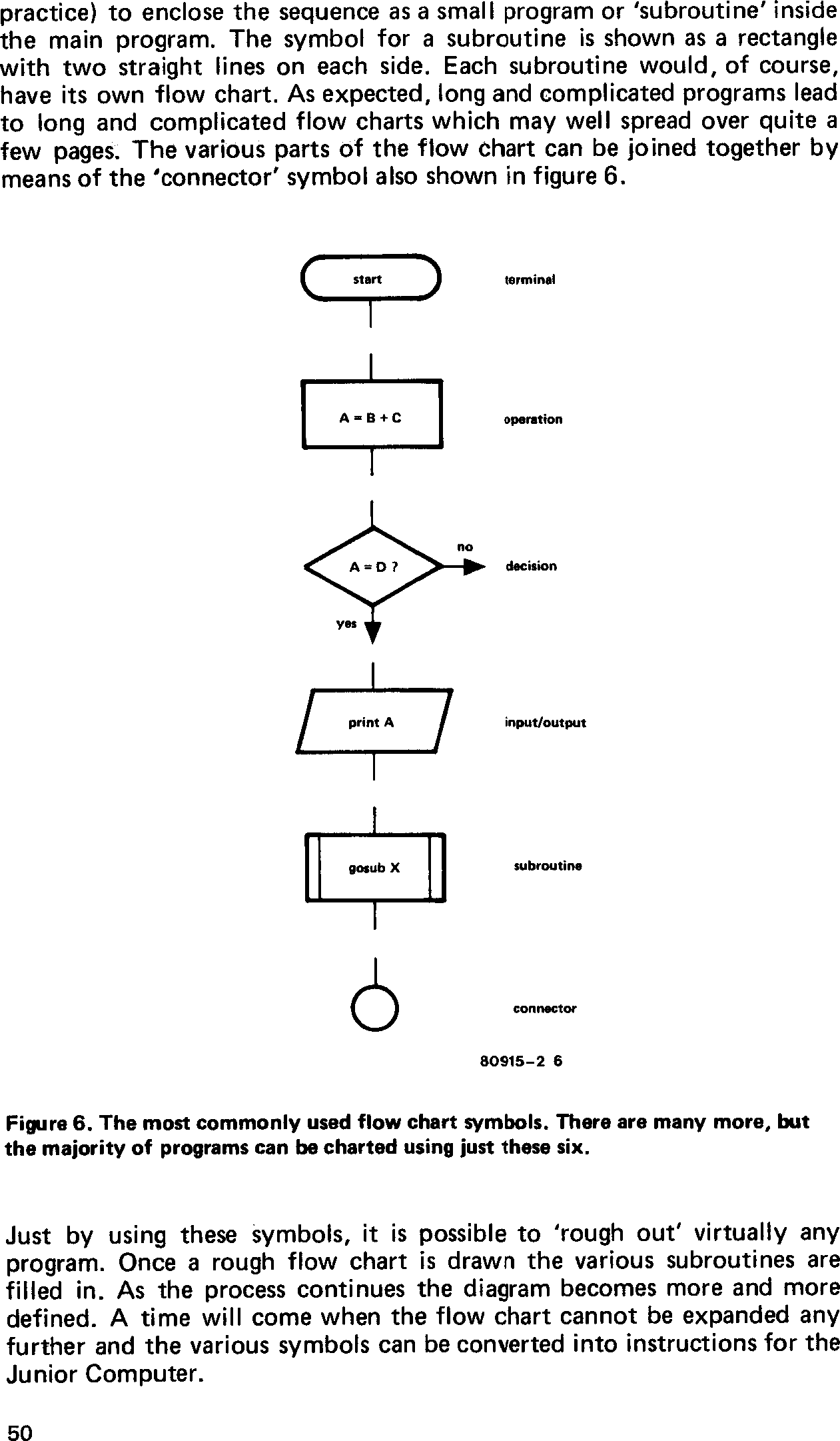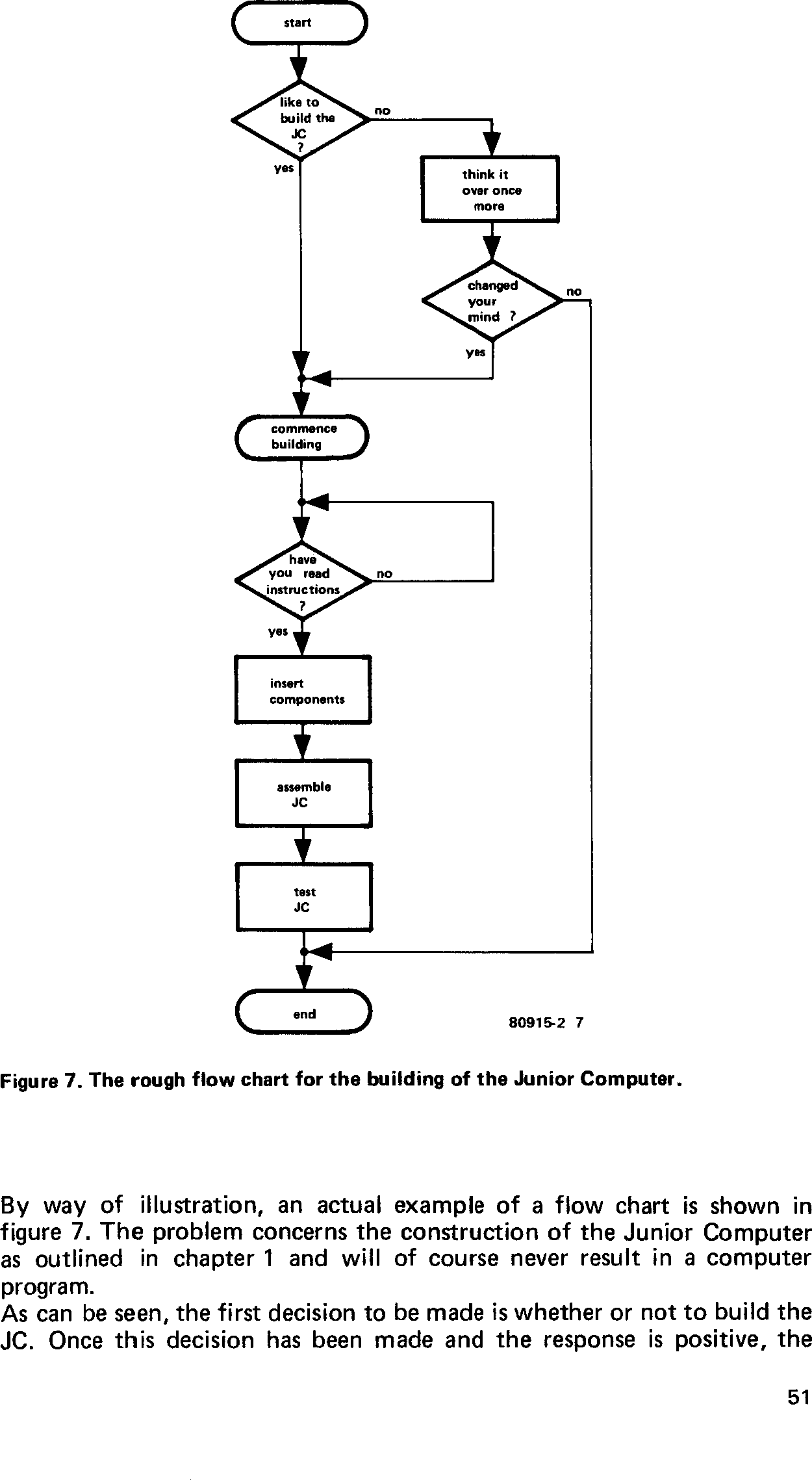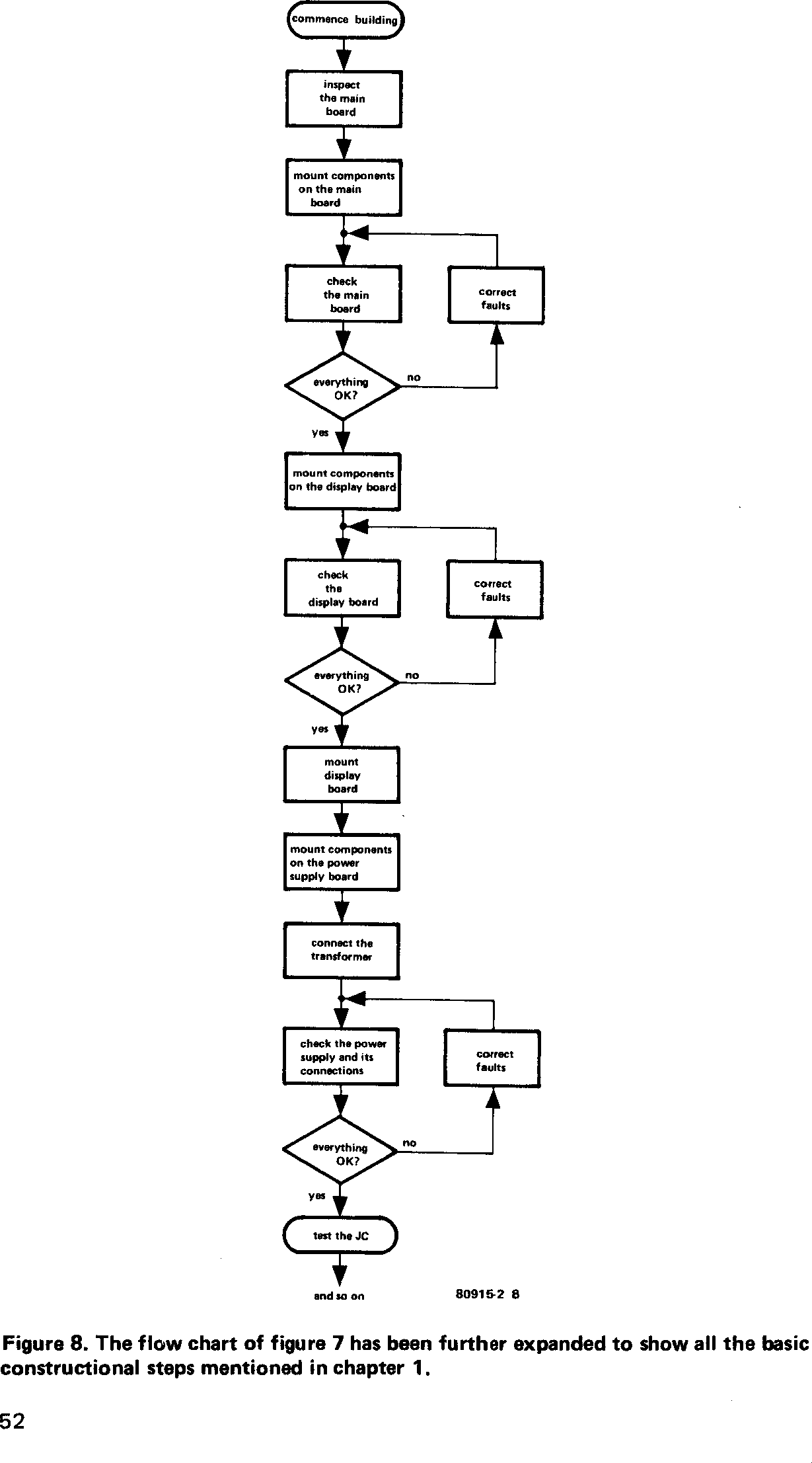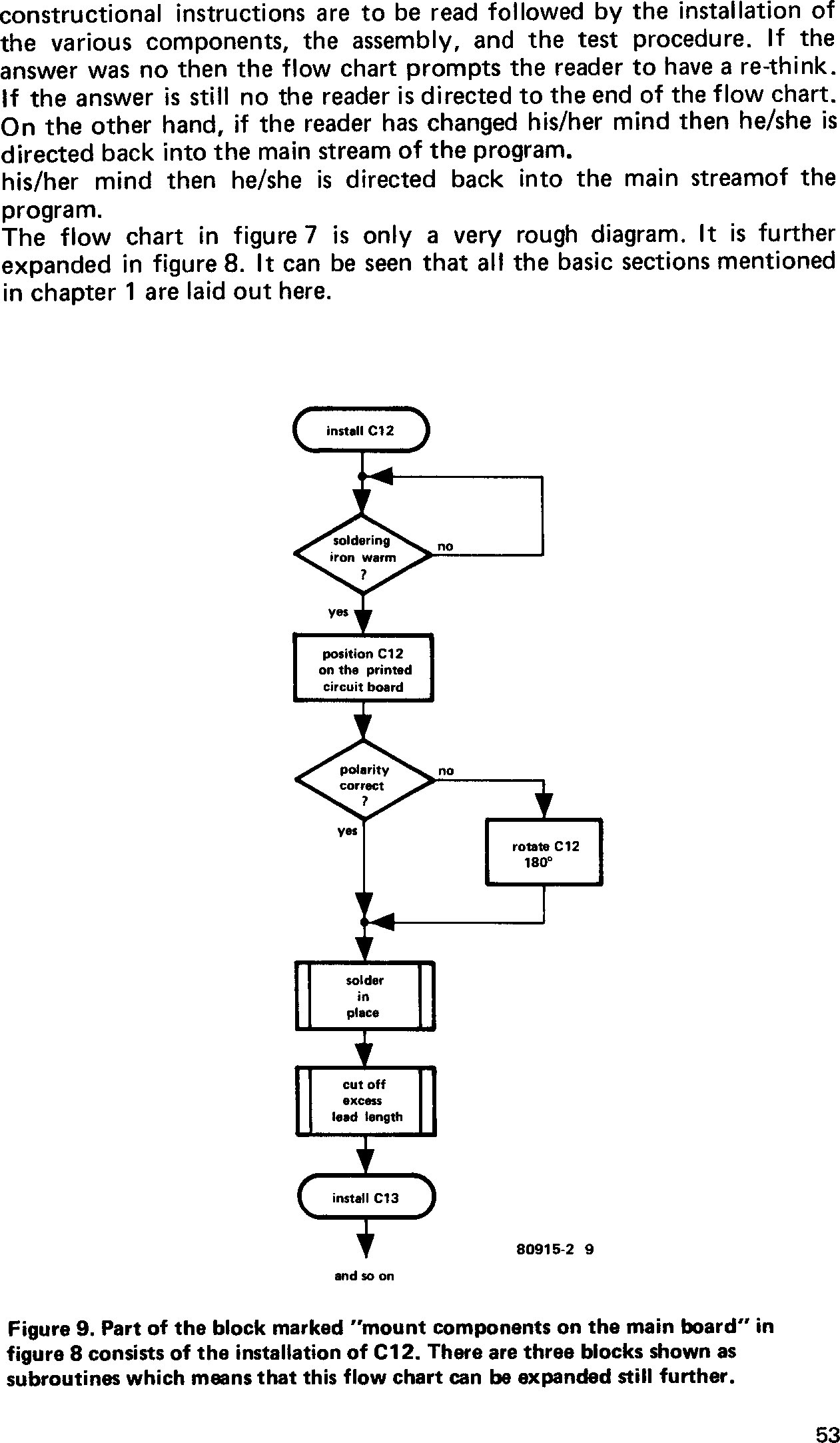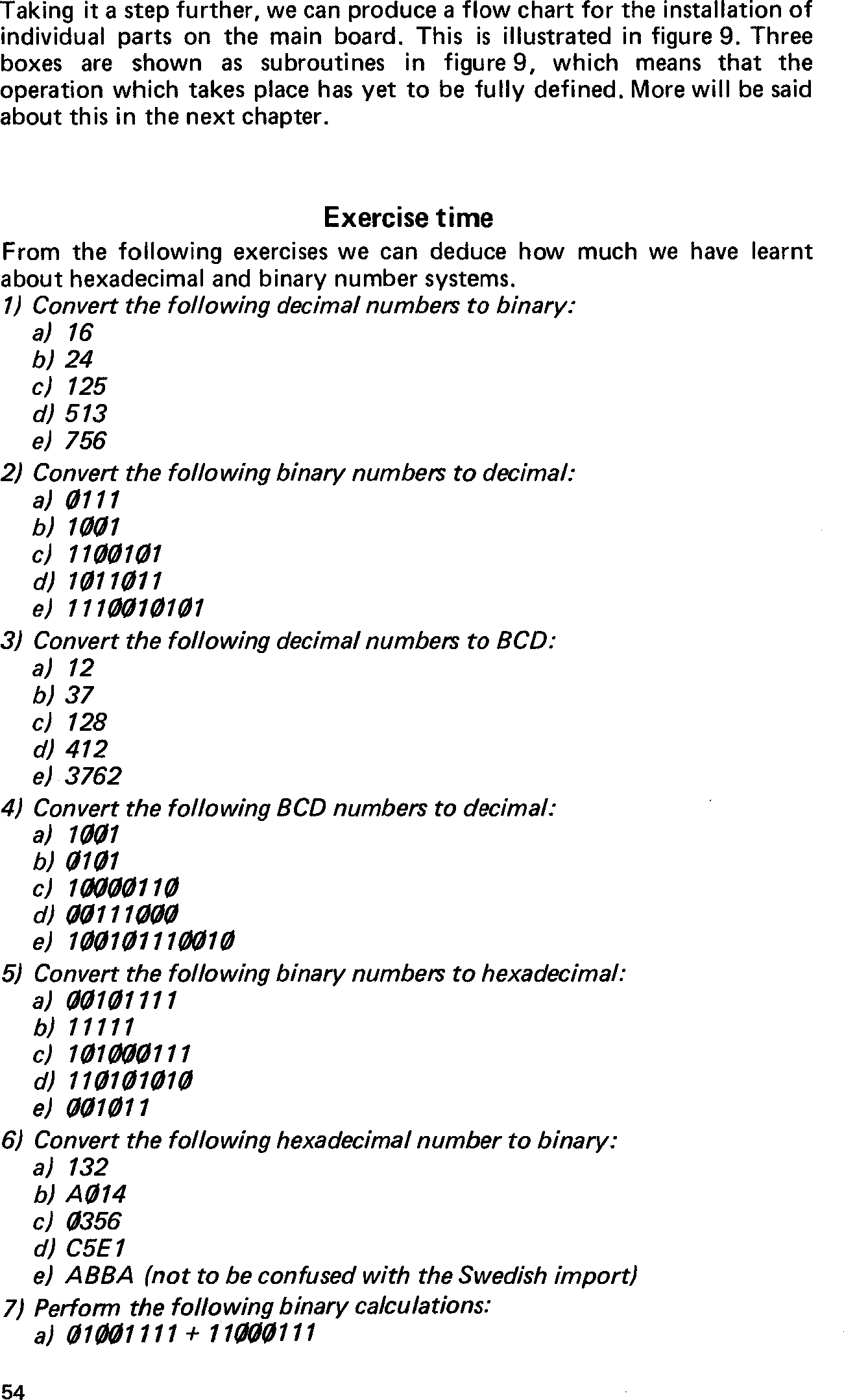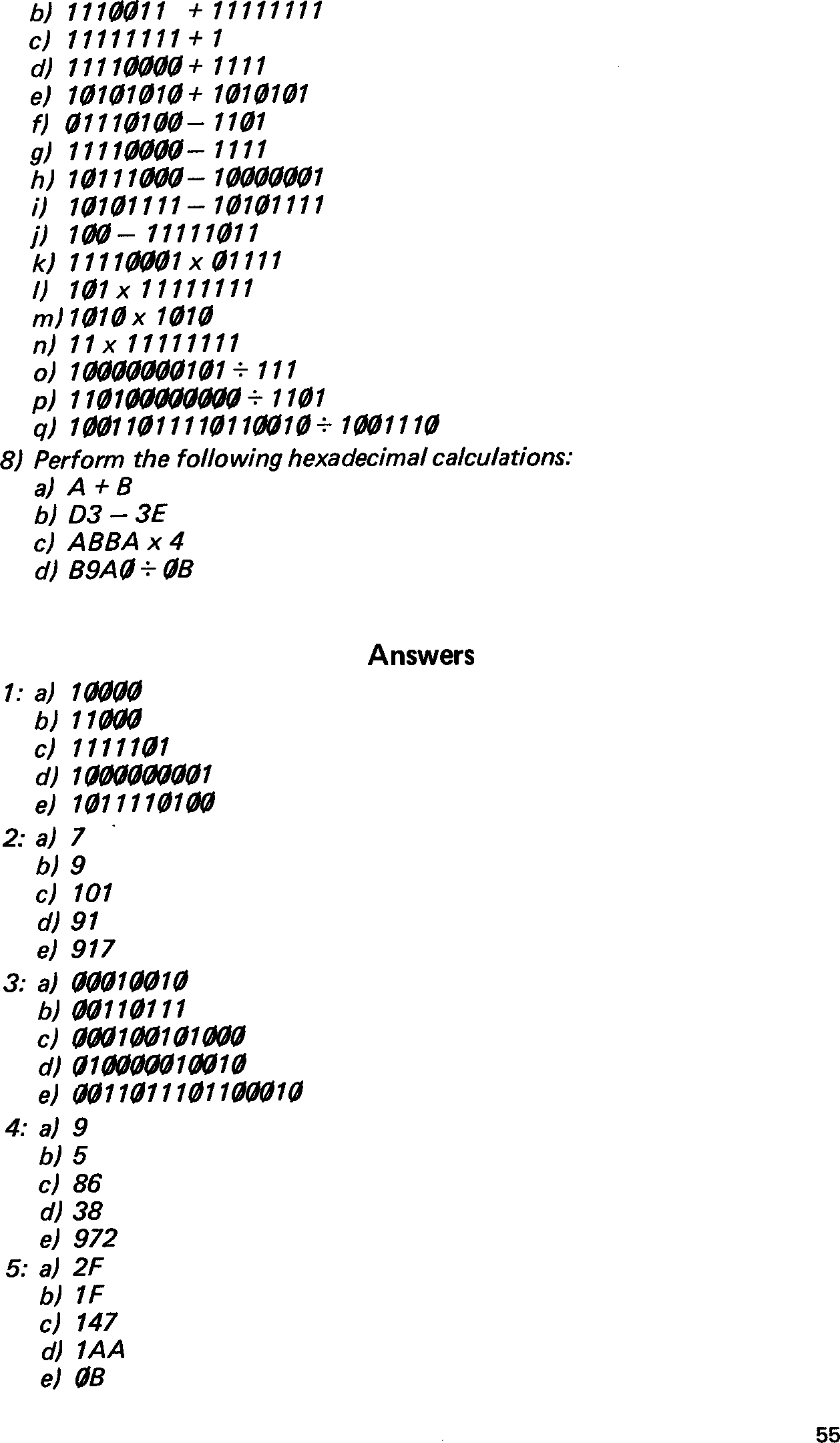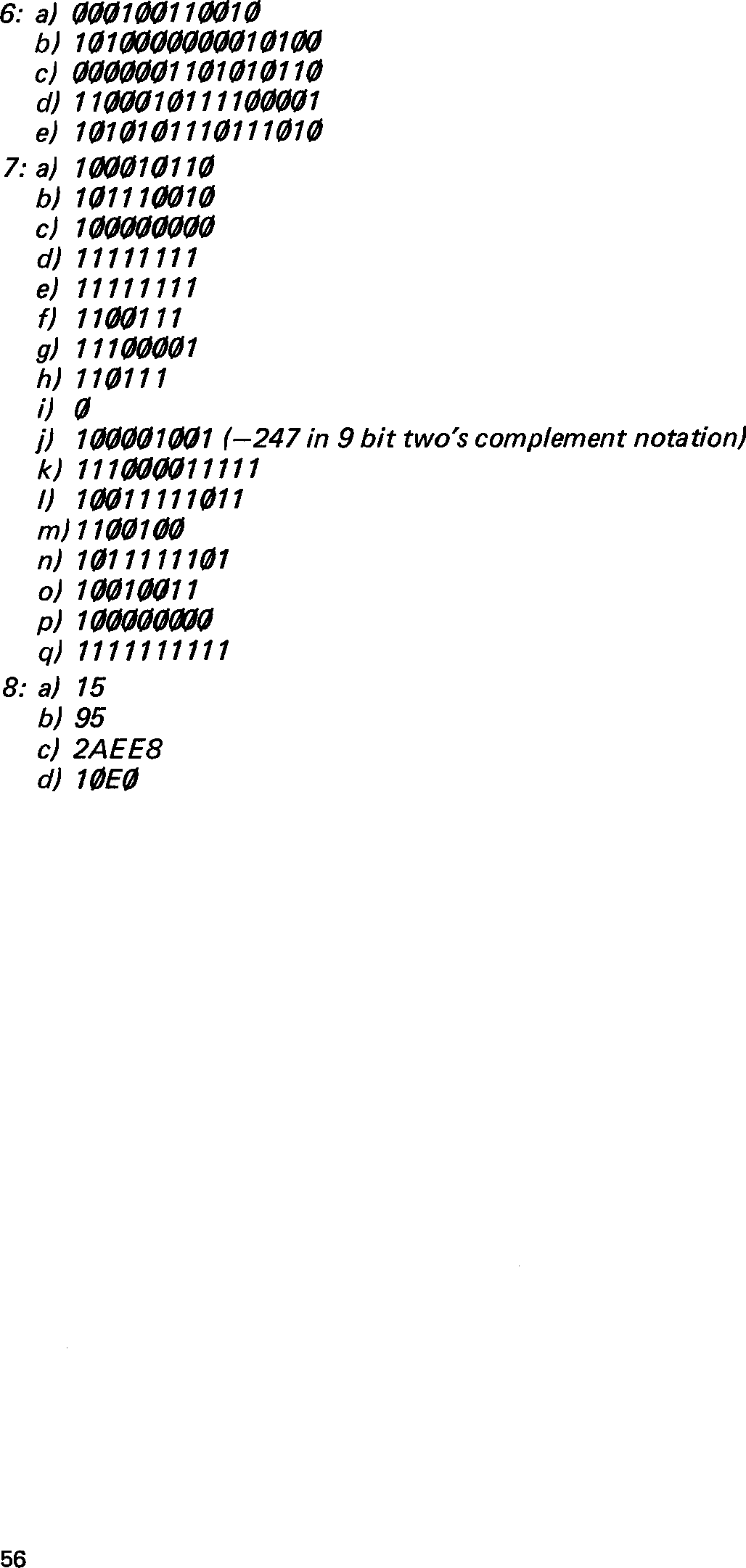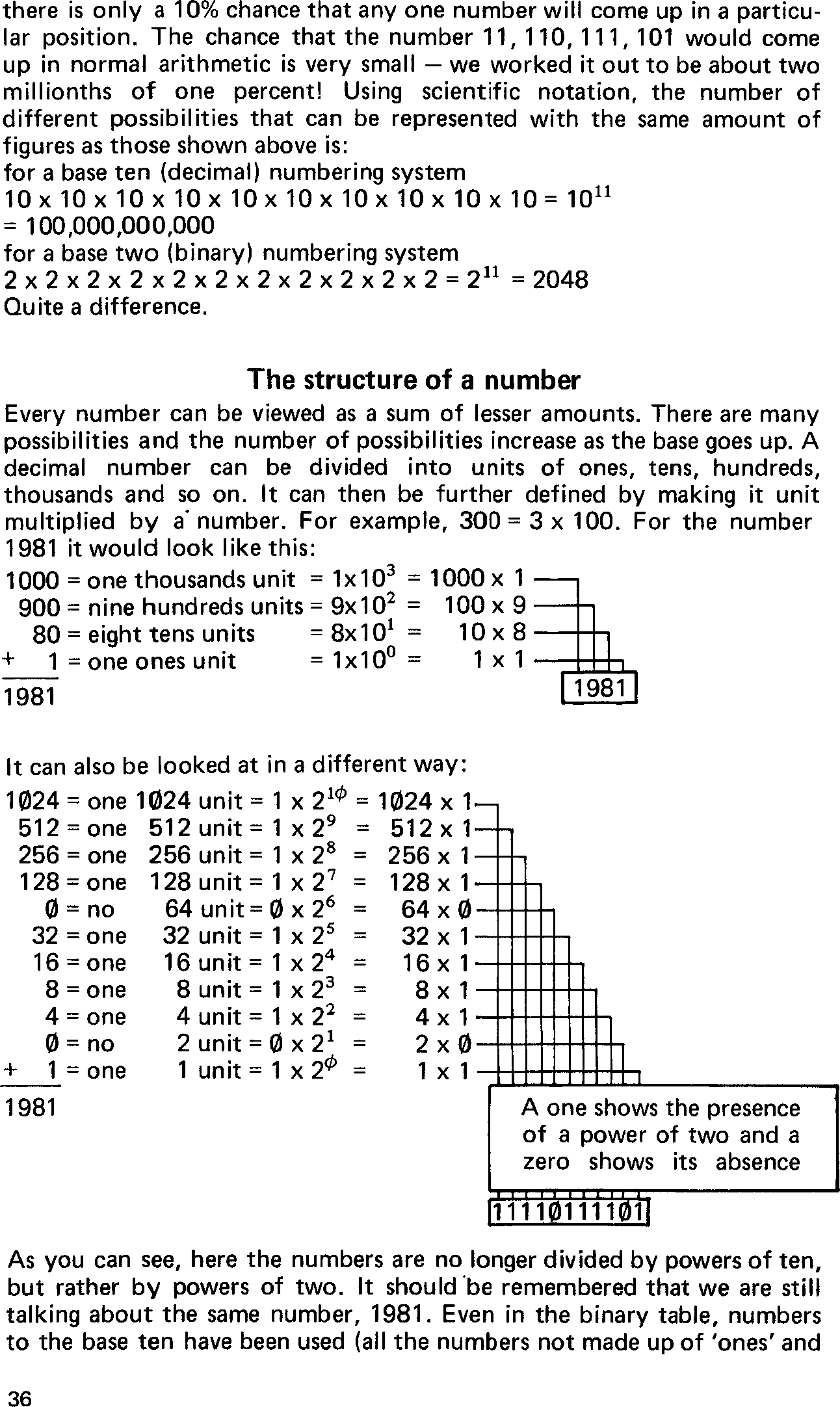
The fact that homo sapiens has ten fingers is probably the reason why we tend to count things in tens. Our set of numbers has ten figures and we have a form of coding system that allows us to manipulate them. While the Junior Computer also works with and manipulates numbers it only has the equivalent of two fingers on which to count. This may seem to be a "bit" of a disadvantage at first sight but this chapter aims to prove otherwise by delving deeper into the binary (base two) numbering system.
Take a 1, a 9, an 8, and another 1. Now write them down one after the other from left to right.
1981
We immediately associate this with a number. A year number for instance, or the price of an expensive article. Using the mathematical code learned at school, it can mean a lot more. The result could be ‘next year’ or it could represent a telephone number. The latter is at the same time a code which, along with an area code, determines the position of various relays and other switching equipment.
If the (telephone) number 1981 were fed into a computer it would look quite different:
11110111101
As mentioned in chapter 1, the circles with diagonal lines through them represent ‘zeros’. The ‘slash’ is used to differentiate between a zero and the capital letter ‘0’. Since there are only two figures in the computer’s numbering system, they will appear far more often than in normal mathematics.
It should be pointed out at this stage that 11 110111101 does not mean 11, 110, 111, 101. The number looks rather strange because there are only ones and zeros in it. With the normal numbering system of ten figures

